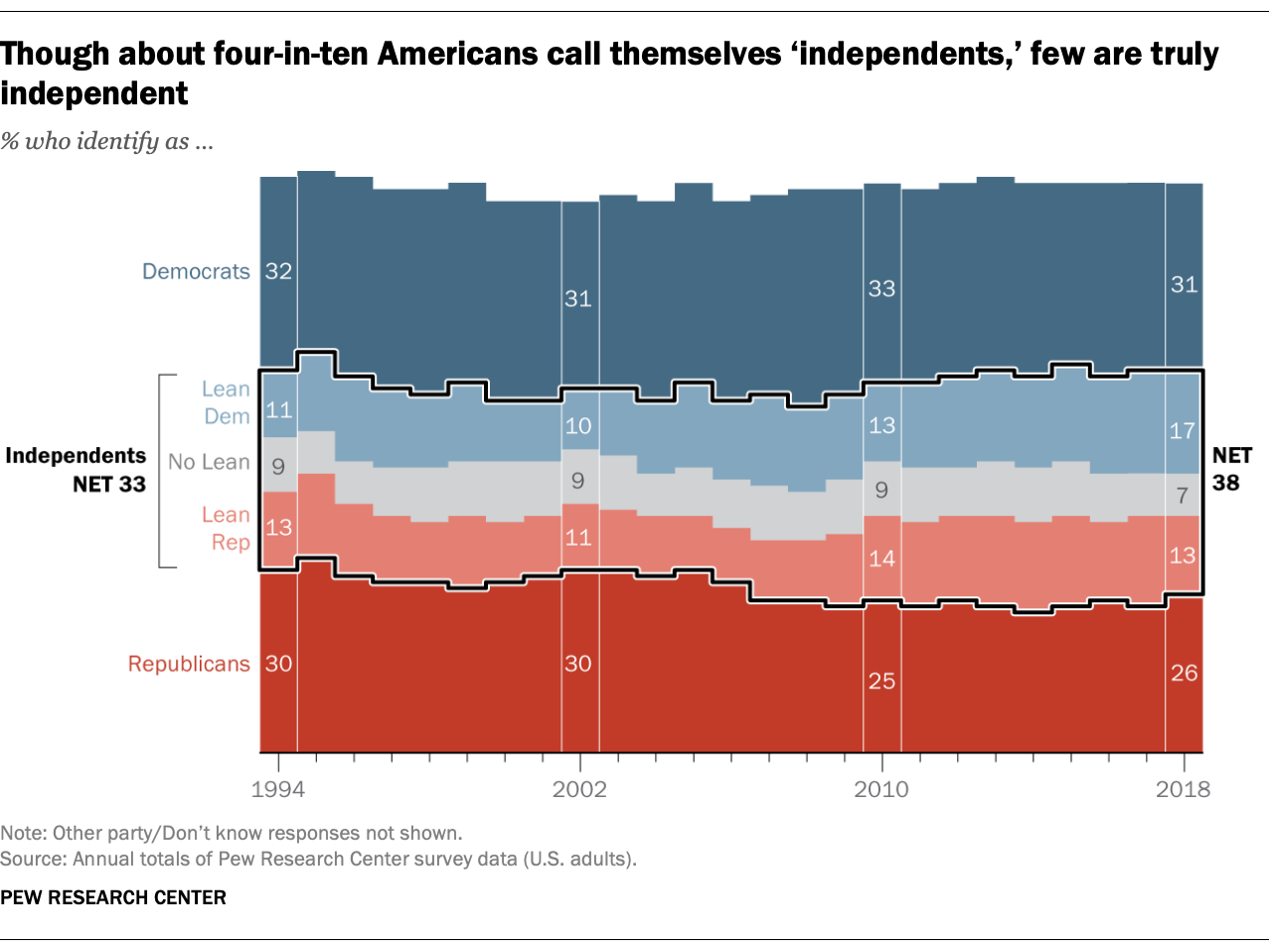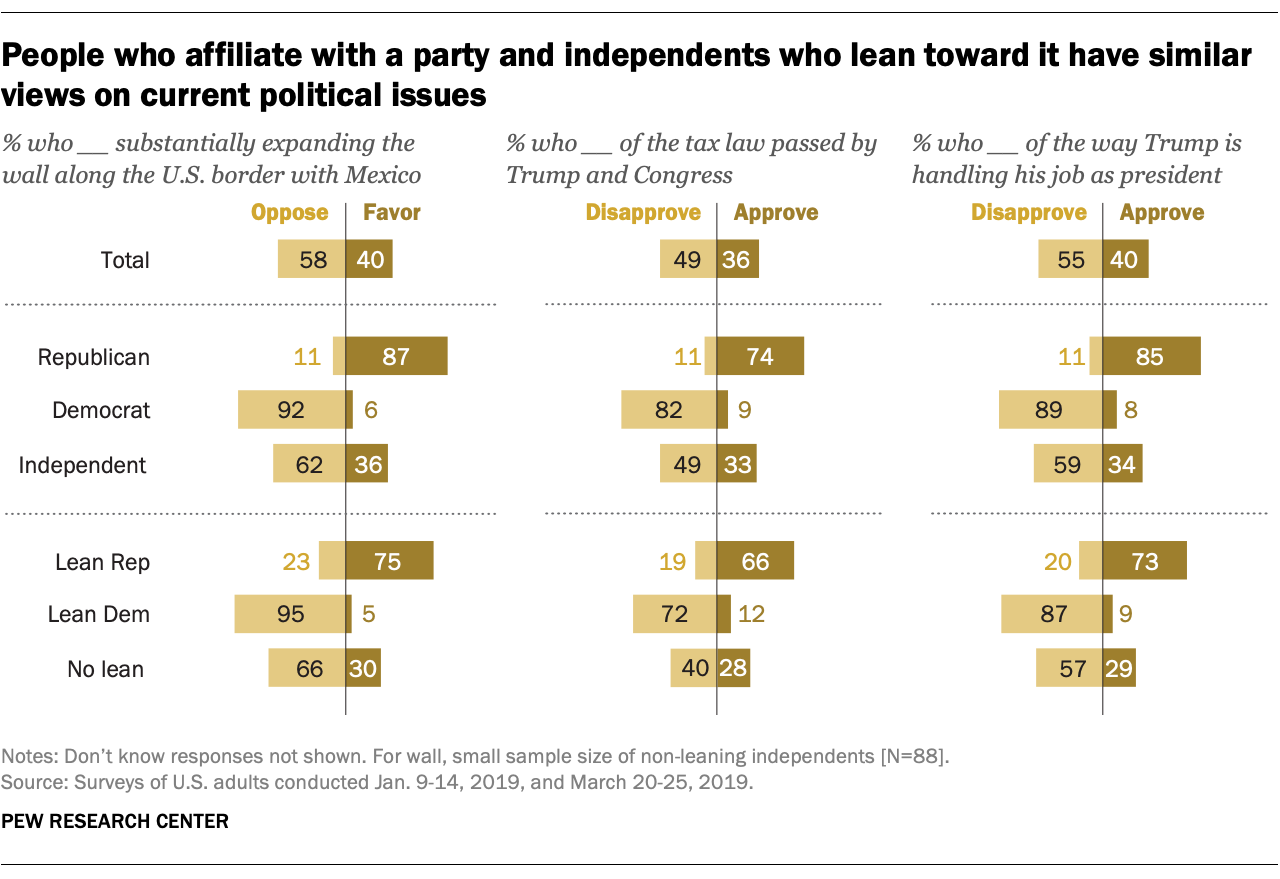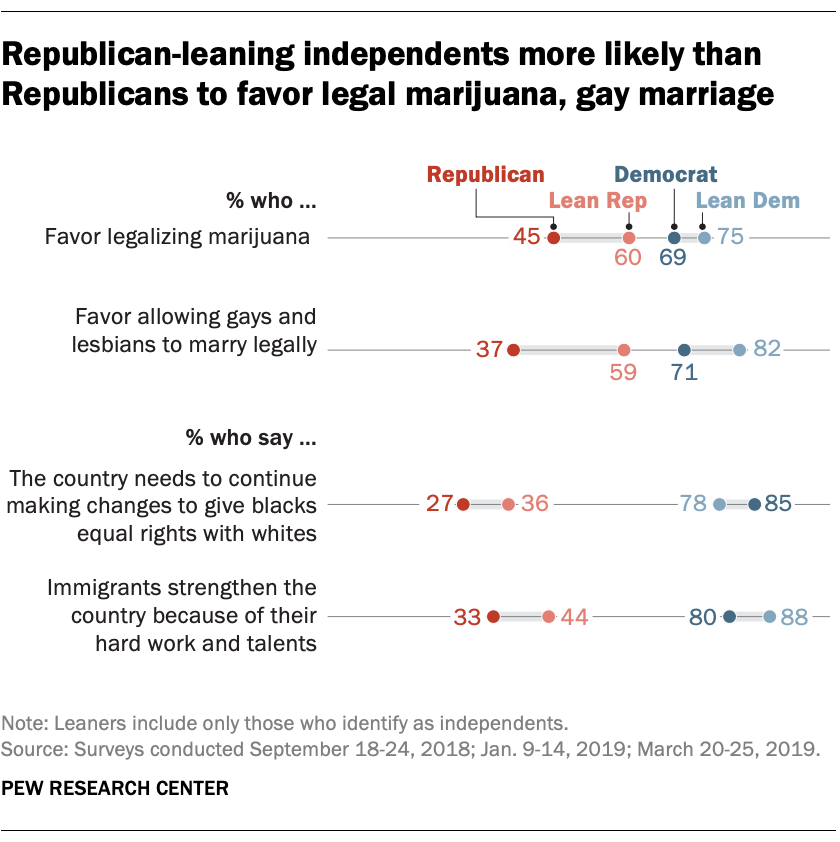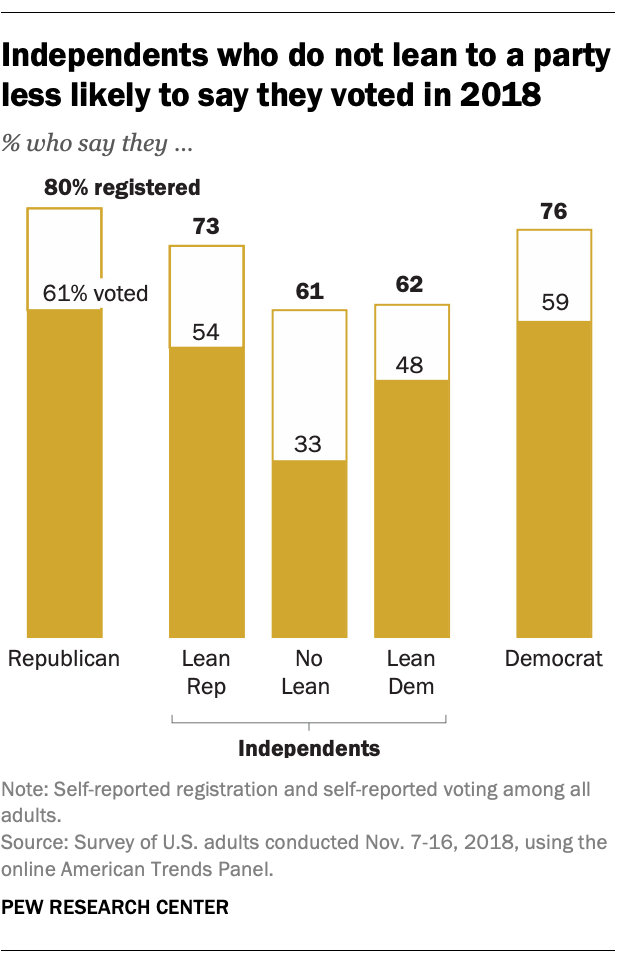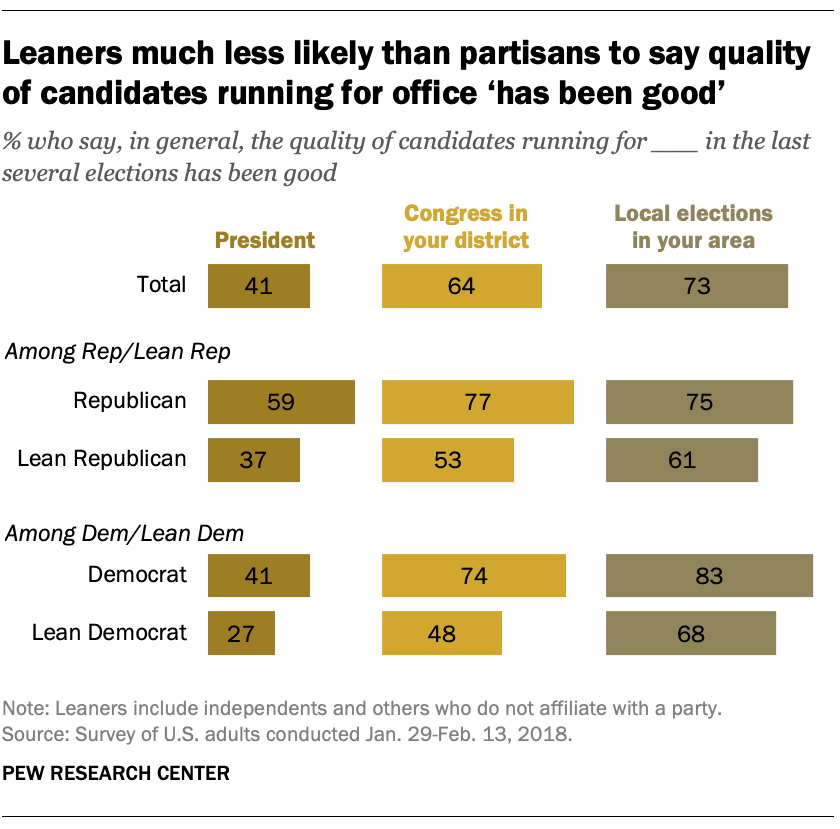In early 2019, a handful of progressive Democrats galvanized their
party around a set of ideas that—even if only partially
implemented—would restructure vast areas of the American economy and
radically refashion the American household with large and ongoing
costs.
This set of proposals, called the Green New Deal (GND)—introduced in the 116
th
Congress as H. R. 109 and S. 59—has earned attention, depending on the
source of commentary, either as an instrument of effective leadership
for the 21
st century or as an unserious ideological signaling
exercise. In either case, it is difficult to read as a set of genuine
policy proposals; it is perhaps better described as a far-reaching,
aspirational set of guideposts for a resurgent progressive force in
American politics.
[1]
The GND actually has a long progressive pedigree. It was championed
by statewide and national Green Party candidates for governor and
president as early as 2006. Presidential candidate Jill Stein gave it
prominence in 2012. The GND attracted early attention from scores of
Democrats including nine presidential candidates and 12 United States
Senators. In response, Republicans pushed for a vote on the GND in the
Senate that failed to attract a single vote from Democrats, including
the resolution’s 12 cosponsors.
[2]
While this paper focuses on the energy components of the GND, among
other features, the GND would guarantee “a job with a family-sustaining
wage, adequate family and medical leave, paid vacations, and retirement
security” as well as high-quality health care, affordable and safe
housing, affordable food, and access to nature. In a word, it promises a
utopia.
At its root, the Green New Deal is a radical blueprint to
de-carbonize the American economy. Carbon—whether contained in wood,
coal, gas, or oil—is a byproduct of burning fuel. Eliminating these
energy sources would have massive ramifications for the economy.
Regardless of its authors’ intentions, our aim here is to examine the
relative trade-offs associated with taking significant portions of the
GND seriously. What would it actually mean to implement significant
portions of proposal? Can we understand the effects at a household level
in different regions of the country?
To that end, the following analysis examines the transformation of
electricity production, transportation and elements of shipping, as well
as construction in five representative states that implementation of
the GND would necessitate. It requires a considerable number of
assumptions that we share in order to allow the reader to come to his or
her own conclusions about the merits of the GND compared to alternative
uses of scarce societal resources.
The sum of our analysis is not favorable for the GND’s advocates. At
best, it can be described as an overwhelmingly expensive proposal
reliant on technologies that have not yet been invented. More likely,
the GND would drive the American economy into a steep economic
depression, while putting off-limits affordable energy necessary for
basic social institutions like hospitals, schools, clean water and
sanitation, cargo shipments, and the inputs needed for the production
and transport of the majority of America’s food supply.
We do not include in this analysis estimates of the cost of the
non-energy components of the GND. Those costs might dwarf the
energy-related costs by an order of magnitude.
For each of five states, we provide a range of estimated costs as well as a best estimate.
Findings
At a minimum, the GND would impose large and recurring costs on American households.
[3]
We conclude that in four of the five states analyzed—Florida, New
Hampshire, New Mexico, and Pennsylvania—the GND would cost a typical
household more than $70,000 in the first year of implementation,
approximately $45,000 for each of the next four years, and more than
$37,000 each year thereafter. In Alaska, estimated costs are much
higher: more than $100,000 in year one, $73,000 in the subsequent four
years, and more than $67,000 each year thereafter.
Sum of Household Costs
Methodology
While the Green New Deal is a wide-ranging proposal, it ultimately
amounts to an imposition of a significant set of constraints on the
energy sector. At present, Americans consume energy from many different
resources. In general, fossil fuels and some renewable fuels directly
power most transportation, and much of the equipment in the industrial,
commercial, and household sectors. The GND would likely reduce the net
energy consumption by these sectors while shifting all energy demand
either to the electric grid or toward self-contained renewable sources
like solar panel arrays designed to power particular units.
Implementation of the GND would shift energy consumption entirely to
electric current from today’s primary sources, including fossil fuels.
Benjamin Zycher of the American Enterprise Institute has analyzed the cost of electricity under the GND.
[4]
His study looks at current electricity generation and estimates what it
would cost to replace all non-GND compliant electricity generation—such
as coal, natural gas, petroleum, and nuclear—with wind and solar power.
Zycher also looks at the cost of emissions, transmission, backup power,
and land for the replacement capacity.
Zycher’s analysis is understated because it does not calculate
additional demand for electricity—the dynamic effects of policy
changes—that would obtain as a result of GND implementation. Zycher’s
low-end estimate addresses the transformation of current power
generation to GND power. Of course, other provisions of the GND would
generate significant demand increases. In addition, Zycher’s cost
estimates extend indefinitely and would affect American households far
into the future.
Energy research firm Wood Mackenzie estimates that the greening of
the U.S. power sector would cost approximately $35,000 per household and
take 20 years.
[5]
Wood Mackenzie estimate a total price tag of some $4.7 trillion,
including around $1.5 trillion to add 1,600 gigawatts of wind and solar
capacity and $2.5 trillion of investments in 900 gigawatts of storage.
Another $700 billion is estimated for new high transmission power lines
to move that electricity from sun-drenched deserts and windswept plains
to the urban areas where it would be used.
Most provisions of the GND are so broad and open-ended that the list
of potential programs necessary to implement the program is limited by
the capacity of legislators to imagine a new government program.
Therefore, it is impossible to calculate the whole or maximum cost of
the GND. However, other parts of the GND are more precise, sufficiently
so that an approximate minimum cost estimate is available.
In addition to increased costs due to electric generation compliant with the GND renewable mandate, the GND calls for:
- The elimination of “pollution and greenhouse gas emissions from
the transportation sector as much as is technologically feasible;”
- “[U]pgrading all existing buildings in the United States and
building new buildings to achieve maximal energy efficiency, water
efficiency, safety, affordability, comfort, and durability, including
through electrification;”[6]
- Where technologically feasible, the elimination of the use of
fossil fuels and other combustible, greenhouse gas-emitting energy
sources.
This study evaluates the estimated cost of the GND in four specific categories across five model states. The categories are:
- Additional electricity demand;
- Costs associated with shipping and the logistics industry;
- New vehicles; and
- Building retrofits.
These cost estimates were made with the available data and
analysis. However, they are only low-end approximations given the
unprecedented scope of the GND. A key source, in addition to Zycher’s
analysis, was produced in early 2019 by Douglas Holtz-Eakin and Dan
Bosch of the American Action Forum.
[7]
Of interest for our analysis, Holtz-Eakin and Bosch estimate the costs
of a “low-carbon electricity grid” (at $5.4 trillion versus Zycher’s
$8.95 trillion annual expenditures) as well as the costs of a
zero-emission transportation system, and a national policy for “green
housing.”
Taken together and married to our own analysis, these estimates
develop a floor of expectations for the costs associated with the
implementation of the GND in the near and intermediate term.
The five selected states demonstrate diverse climates, geography, economies, and populations.
- Alaska is a remote, sparsely populated, and cold state.
- Florida is one of the largest states in terms of population and
economy, undoubtedly the economic powerhouse of the Southeast, in a warm
climate.
- New Hampshire is a small state that is well connected with larger economies in the region in a cold climate.
- New Mexico is a small state in terms of population, but large
geographically, is generally warmer, and is situated between significant
large states by all metrics.
- Pennsylvania is a large state in terms of geography, economy, and
population in a mild-colder climate and is well integrated with the
largest regional economy in the United States.
Previous Analysis
Evaluating the impact of the GND in these states will provide a
glimpse into the proposal’s broader national impact and information
similar states can use to infer their own cost estimates.
As shown in Figure 1, earlier analyses provide a range of new, annual
costs expected for each household in each of our states from a low-end
$24,820 in New Hampshire to upward of $89,000 in all our states. These
estimates cover only three aspects of the GND proposals and do not
include the dynamic effects of increased demand on the power grid, for
example, from a fleet of electric cars or the transformation of all
automobiles to zero-emission vehicles.
The cost estimates for the power grid and transportation system do
not include the costs necessary to replace or retrofit machinery
currently dependent on fossil fuels or other combustibles. Such an
estimate would require an inventory of every machine of this type in the
country, from propane-powered forklifts to natural gas stoves to
diesel-powered tugboats, as well as cost estimates of all replacement
technology capable of being indirectly powered by wind and solar and
necessary to achieve parity in terms of their ability to perform the
same work. Therefore, not counted in this analysis are road-building and
maintenance equipment, tractors and other farm equipment, or the
standard tools of heavy construction for, among other things, new
buildings, windmills, solar and other alternative energy facilities.
Figure 1. Previous Estimates Produce Range of New Annual Household Costs –
Electric Power, Transportation, Housing [8][9]
 Shipping and Logistics
Shipping and Logistics
Modern America is reliant upon global, hemispheric, and regional
trade. Local economies (beyond a handful of experimental communities)
exchange goods and services. We build, dig, grow, and ultimately ship
things and it requires a great deal of energy to do so.
An estimate for the cost of the GND proposals on shipping and
logistics starts with data on goods shipped to each of the model states
by transportation methods for which we have data. However, basic
economic theory suggests that due to increased costs for GND-compliant
shipping, an elasticity of demand would reduce the use of these
technologies, as higher prices drive away consumers. While this could
inflate our estimates, we are confident that the costs for development
and deployment of substitute shipping technologies far outweigh reduced
demand for traditional shipping even after the expense of retrofitting
it to the GND.
Our estimates exclude air cargo and relies exclusively on trucking,
rail, and barge traffic for which data are available. The exclusion of
air cargo would effectively eliminate the availability of off-season
produce, the timely delivery of FedEx and Amazon packages and a great
deal of U.S. mail delivery. Relative comparisons are made between
current costs and estimated GND compliant costs by evaluating energy
intensity of the total shipping in terms of BTUs.
[10]
The Center for Transportation Analysis’s Freight Analysis Framework
database provides information on total ton-miles of freight by shipping
mode by destination state.
[11] These ton-miles also exclude any freight that is not GND-compliant, such as shipments of oil or coal.
Figure 2. Mode-Exclusive Million Ton-Miles by Destination State by Mode, Excluding Non-GND Compliant Freight (2017)

The BTU intensity per ton-mile for trucking, rail, and barge traffic is drawn from an analysis by the U.S. Department of Energy.
[12]
Trucking is approximately four to five times as energy intensive as
rail or barge (1,390 BTU per ton-mile for trucking versus 320 and 225
for rail or barge.)We assume that nearly all freight delivered to these
states is through a combination of these modes or via air cargo.
However, air cargo is not specified in the available data and therefore
we assume no costs for bringing air cargo shipments into compliance with
the GND. As a result, the cost estimates presented here are
significantly lower than the likely costs.
The combination of ton-miles in Figure 2 with BTU intensity by mode
gives us an estimate for the total annual energy consumption, in BTUs,
for freight delivered to each model state for each mode of shipping.
Figure 3, relying upon an estimate from the University of Pennsylvania
for $32.24 for the production of a million BTUs from renewable sources,
provides an estimate for increased shipping fuel costs due to GND
implementation.
[13]
For purposes of illustration, we assume an extraordinary technological
improvement in the development of renewable energy and have halved the
cost estimate of a million BTUs to $16.12.
Figure 3. Mode-Exclusive Shipping Energy Consumed in Million BTUs (2017) and Annual Household Costs
 New Vehicles
New Vehicles
A key pillar of the GND is replacing all existing combustible-powered
vehicles with electric vehicles (EVs). Current projections are for EVs
to be, on average, more costly than conventional vehicles. EV prices,
like conventional gas vehicle prices, will also vary based on size and
features. Perhaps the most critical differentiating feature for the near
term is the type of battery available for the vehicle. EVs that charge
faster and have a longer range will undoubtedly fetch higher market
prices. However, for the purposes of our analysis, a conservative
estimate for EV costs to consumers is used. The price of $39,500 is in
line with the base MSRPs of the most popular EVs sold today.
[14] To control for existing EVs, a ratio of 2.21 EVs per 1,000 residents is used to calculate total EVs in each state.
[15]
Commercial cargo trucks are a different matter. There has not yet
been similar adoption of EV technology in trucking. Further, prices of
EV trucks are largely speculative at this time. For illustrative
purposes (though not included in our analysis or conclusions), the
prospective list price of an electric semi-tractor from Tesla is
$180,000.
[16]
Needless to say, this price is speculative and in these five states
there are more than 15 million commercial trucks on the road today.
While the economic effects of the GND must account for commercial
vehicles, our analysis does not include them, and is therefore a
conservative estimate of new vehicle costs. However, a partial
accounting is made for truck freight in the shipping analysis above.
These costs are just upfront purchase price seen by consumers. EVs
will also impose costs through the necessary infrastructure retrofits to
have sufficient charging capacity for these vehicles at homes,
businesses, and other public places, each of which will cost many
thousands of dollars.
Figure 4. Annual Cost of Replacing Existing non-GND Compliant Vehicles with Electric Vehicles [17]

The GND calls for maximum building efficiency. It explicitly
envisions the retrofit of the current stock of structures in America. In
the construction industry, retrofits of this kind are known as deep
energy retrofits (DERs). The cost of a DER can vary considerably, given
varying climates, building ages, uses, sizes, and other factors. A 2014
meta-analysis relied upon by the Department of Energy is the basis for
our assumptions about residential construction. The average cost per a
unit of housing for a DER is estimated at $40,420.
[18] The maximum average cost of a DER for commercial buildings is estimated at $75 per square foot.
[19]
Building Retrofits
Almost no data are readily available regarding industrial DERs, so we
rely upon assumptions made in the underlying analyses. Therefore, we
use an average maximum cost for large commercial buildings, $150 per
square foot, as an estimated cost for industrial DERs.
[20]
State-by-state data for total building square footage is also scarce.
For this study, energy consumption totals per sector divided by average
energy consumption per square foot, both in BTUs, determined total
square footage in each model state. Consumption per square foot was not
readily available for industrial buildings, so a modest increase in
consumption per square foot was assumed over commercial buildings in
order to derive total industrial square footage.
Data from the Energy Information Administration (EIA) show that
energy consumption per square foot in 2015 was 38,400 BTUs for
residences and 82,000 BTUs for commercial buildings.
[21]
Industrial consumption per square foot was assumed at 100,000 BTUs,
given the increase in BTU consumption per square foot from residential
to commercial.
Combining these figures with total 2016 energy consumption in BTUs per sector, obtained from EIA’s state-by-state database,
[22] produced estimates of total active square footage of buildings across all sectors.
Figure 5. Residential, Commercial, and Industrial Square Footage[23]
 Figure 6. DER Investments under GND
Figure 6. DER Investments under GNDThe
total cost of implementing a DER for all existing buildings in the
United States is estimated via two methods. For residential, total DER
cost is calculated by obtaining census data on total housing units in
each state in 2018 and multiplying this figure by the average
residential unit DER cost of $40,420.
[24]
For commercial and industrial buildings, the average DER cost is
obtained by multiplying estimated and assumed DER costs for commercial
and industrial buildings, respectively, by total estimated square
footage.

Taken together, the estimated costs for retrofitting current
residential, commercial, and industrial buildings is astronomical. Of
our representative states, Alaska has the fewest residential structures
and other square footage by orders of magnitude.Critically, the
discussion of this paper is about the cost of transition to GND
structures. Clearly, any benefits realized from more energy efficient
buildings would reduce future operating costs and emissions.
Yet, the combined investments to upgrade residential, commercial, and
industrial building stock is a mind-boggling $533.4 billion. (See
Figure 7.) Therefore, for the purposes of public education, the key
figure is the average cost of a DER for residential homes, $40,420.
Figure 7. Total DER Investments by Household
 Summary and Synthetic Estimates for Robustness
Summary and Synthetic Estimates for Robustness
Figures 8, 9, and 10 summarize the findings of this study in order to
put in context the tremendous costs of the GND. As a final set of
calculations, we created synthetic estimates for the variables where
multiple analyses exist: the household costs for the electric grid,
electric vehicles, and retrofitting the nation’s housing stock to comply
with the GND.
Zycher’s analysis varies by state for the electric grid, while
Holtz-Eakin and Bosch offer a national average of $39,000 and Wood
Mackenzie finds a national average of $35,000. The first synthetic
variable, Synthetic Grid Estimate, takes the average of these three
figures. For Alaska, only the latter two estimates are averaged; Zycher
did not offer an estimate. For example, in Florida, Zycher estimates
$4,273, Wood Mackenzie estimates $35,000, and Holtz-Eakin and Bosch
estimate $39,000. The average or combined estimate is the sum of the
figures divided by three, $23,091.
We present our own estimate to transform the auto fleet to EVs and
include a range of likely expenses from Holtz-Eakin and Bosch for
shifting the nation to high-speed rail. The synthetic transportation
estimate is the mid-point of the range for high-speed rail combined with
the household EV costs.
We also created a synthetic estimate for housing using the average
DER cost of $40,240 and the range of likely outcomes found by
Holtz-Eakin and Bosch of $12,000 to $30,000. Because there is no state
variability in the data, the synthetic housing estimate is $27,413.
Figure 8. Average Household Costs [25]

The synthetic estimates, when combined with the estimate for
increased shipping expenses, produce a single figure for households in
each state for the initial year of implementation. For each of the next
four years, the household costs would fall by $27,413, the amount to
implement a DER for every home. After five years, the expense associated
with converting each household to EVs would fall away.
While it is not possible to express absolute confidence in the
estimated costs for these provisions of the GND, the use of synthetic
estimates reduces the risk of any one type of analysis skewing the
results. Critics will undoubtedly highlight the variance in the data.
However, variance is not a detriment when analyzing such a sweeping set
of proposals. Rather, it is a mark of humility. Further, we contend that
the conclusions drawn here are extremely modest, representing only the
energy-related costs. The GND calls for universal health care and
guaranteed employment among other social policies that would have
tremendous transition costs.
Figure 9. Synthetic Estimates and Best Estimate of Household Costs
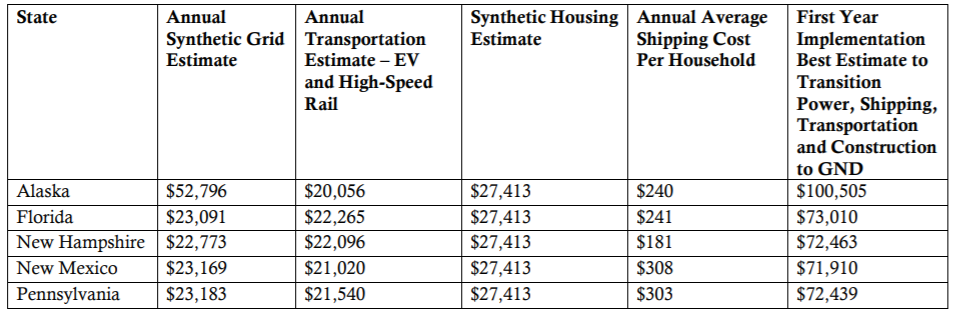 Figure 10. Sum of Average Household Costs
Figure 10. Sum of Average Household Costs
 Conclusion
Conclusion
The Green New Deal is a plan to radically reshape the American
economy and the landscape of a household economy. Every aspect of how we
live and work would be affected by the proposal. The preponderance of
goods essential for agriculture, transportation, and construction would
be replaced. In short, it is not realistic. However, national political
figures and perhaps even a growing movement of fellow citizens would
like to implement it as a policy agenda.
All of the potential benefits, and social costs—such as massive
increases in land use for the production of energy and food without
fossil fuel inputs—are beyond the scope of this analysis. Yet we can
conclude that the Green New Deal is an unserious proposal that is at
best negligent in its anticipation of transition costs and at worst is a
politically motivated policy whose creativity is outweighed by its
enormous potential for economic destruction.
Notes
[1] Recognizing the duty of the Federal Government to create a Green New Deal, H.R. 109/S. 59, 116
th
Congress,
https://www.congress.gov/bill/116th-congress/house-resolution/109/text,
https://www.congress.gov/bill/116th-congress/senate-resolution/59?q=%7B%22search%22%3A%5B%22green+new+deal%22%5D%7D&s=2&r=3.
[2] Vote summary, “On the Cloture Motion (Motion to Invoke Cloture on the Motion to Proceed to S.J. Res. 8 ,
Vote Number 52, 3/5 Vote Result: Cloture Motion Rejected March 26, 2019, 04:18 PM,
https://www.senate.gov/legislative/LIS/roll_call_lists/roll_call_vote_cfm.cfm?congress=116&session=1&vote=00052#top.
[3]
Benefit-cost estimates rely on net present value (NPV) to provide
analysts a tool to see how various benefits or costs change over time.
Similarly, robust cost estimates utilize NPV analysis and costs are
calculated as negative, future cash-flows. The various elements of the
GND – from changes in housing stock, to vehicles, to the electric grid –
would all require specialized and differing discount rates to find the
NPV. This analysis is a composite of others’ work as well as our own
estimates and there is no single discount rate available that is
sensible for either the component parts of the GND or the other cost
estimates. As a result, we did not discount future costs. Admittedly,
this may overestimate the effects of the GND in the out years but we are
confident that the magnitude of the estimated costs are not affected by
minor variances in discount rates or the NPV for the GND.
[4] Benjamin Zycher,
The Green New Deal: Economics and Policy Analytics, American Enterprise Institute, 2019, https://www.aei.org/wp-content/uploads/2019/04/RPT-The-Green-New-Deal-5.5x8.5-FINAL.pdf.
[5]
Nichola Groom, “Weaning U.S. power sector off fossil fuels would cost
$4.7 trillion: study,” Reuters, June 27, 2019,
https://www.reuters.com/article/us-usa-carbon-report/weaning-u-s-power-sector-off-fossil-fuels-would-cost-4-7-trillion-study-idUSKCN1TS0GX.
[6] H.R.109.
[7]
Douglas Holtz-Eakin, Dan Bosch, Ben Gitis, Dan Goldbeck, and Philip
Rossetti, The Green New Deal: Scope, Scale, and Implications, American
Action Forum, February 25, 2019,
https://www.americanactionforum.org/research/the-green-new-deal-scope-scale-and-implications/.
[8]
With 126.22 million households in the United States in 2017. “Number of
households in the United States in 2017, by state (in millions),”
Statista,
https://www.statista.com/statistics/242258/number-of-us-households-by-state/.
[9] Holtz-Eakin and Bosch provide national estimate and an average household estimate. Presented here is the household estimate.
[10] A British thermal unit is a unit of measure for energy. One million BTUs is enough to dry about 50 loads of laundry.
[11]
Freight Analysis Framework Data Tabulation Tool (FAF4), Center for
Transportation Analysis, accessed July 10, 2019,
https://faf.ornl.gov/faf4/Extraction2.aspx.
[12]
Trucking and Rail BTUs per ton-mile: U.S. Department of Energy, Office
of Energy Efficiency and Renewable Energy, “Freight Transportation
Demand: Energy-Efficient Scenarios for a Low-Carbon Future,”
Transportation Energy Futures Series, March 2013,
https://digital.library.unt.edu/ark:/67531/metadc844590/m2/1/high_res_d/1072830.pdf.
Barge BTUs per ton-mile: U.S. Department of Transportation, Bureau of
Transportation Statistics, Table 6-10 Energy Intensities of Domestic
Freight Transportation Modes: 2007-2013,
https://www.bts.gov/archive/data_and_statistics/by_subject/freight/freight_facts_2015/chapter6/table6_10.
[13]
Energy Cost Calculator, College of Agricultural Sciences, Cooperative
Extension, Pennsylvania State University, accessed July 10, 2019,
https://buffalo.extension.wisc.edu/files/2011/01/Energy-Cost-Calculator-for-Various-Fuels-PSU.pdf.
[14]
Jeffrery Rissman, “The Future of Electric Vehicles in the U.S.,” Energy
Innovation Policy & Technology LLC, September 2017,
https://energyinnovation.org/wp-content/uploads/2017/10/2017-09-13-Future-of-EVs-Research-Note_FINAL.pdf.
[15]
Mark Kane, “State-By-State Look at Plug-In Electric Cars per 1,000
Residents,” InsideEVs, December 1, 2018,
https://insideevs.com/news/341522/state-by-state-look-at-plug-in-electric-cars-per-1000-residents/.
[16] Tesla Semi, Tesla website, accessed July 10, 2019, https://www.tesla.com/semi.
[17]
The cost of an EV purchased for $39,500 can be amortized across five
years with a typical low interest auto loan. We assume that each auto is
purchased with ten percent down ($3,950) and $35,550 on credit at 2.9
percent. This generous formula creates an annual burden, in addition to
the down payment, of $637.21 a month or nearly $7,647 a year. To
simplify the analysis, we assume that the down payment is provided
through a combination of new federal and state subsidies, and thus
consumers are responsible for 90 percent of the purchase price.
[18]
Brennan Less and Iain Walker, “A Meta-Analysis of Single-Family Deep
Energy Retrofit Performance in the U.S.”, Environmental Energy
Technologies Division, Berkeley Lab, prepared for the U.S. Department of
Energy
Office of Scientific and Technical Information, 2014, https://www.osti.gov/servlets/purl/1129577.
[19]
Daniel S.Bertoldi, “Deep Energy Retrofits Using the Integrative Design
Process: Are they Worth the Cost,” Master’s Projects and Capstones,
University of San Francisco, spring 2014,
https://repository.usfca.edu/capstone/22.
[20] Ibid.
[21]
Energy Information Administration, Table CE1.1 Summary annual household
site consumption and expenditures in the U.S.—totals and intensities,
2015,” May 2018,
https://www.eia.gov/consumption/residential/data/2015/cande/pdf/ce1.1.pdf.
Energy Information Administration, Table E2. Major fuel consumption
intensities (Btu) by end use, 2012, May 2016
https://www.eia.gov/consumption/commercial/data/2012/cande/pdf/e2.pdf.
[22]
Energy Information Administration, Alaska End-use energy consumption
2017, estimates, accessed July 10, 2019,
https://www.eia.gov/beta/states/states/ak/overview.
[23]
Figure 5 relies upon 2016 consumption data found at the EIA’s website.
Energy Information Administration, State Energy Consumption Estimates:
1960 through 2017,
https://www.eia.gov/state/seds/sep_use/notes/use_print.pdf.
[24] U.S. Census Bureau, Quick Facts, Alaska, accessed July 10, 2019, https://www.census.gov/quickfacts/AK.
U.S. Census Bureau, Quick Facts, Florida, accessed July 10, 2019, https://www.census.gov/quickfacts/fact/table/FL/PST045218
U.S. Census Bureau, Quick Facts, New Hampshire, accessed July 10,
2019, https://www.census.gov/quickfacts/fact/table/NH/LND110210.
U.S. Census Bureau, Quick Facts, New Mexico, accessed July 10, 2019, https://www.census.gov/quickfacts/NM.
U.S. Census Bureau, QuickFacts, Pennsylvania, accessed July 10, 2019, https://www.census.gov/quickfacts/PA.
[25] These costs are for each of the first five years.

